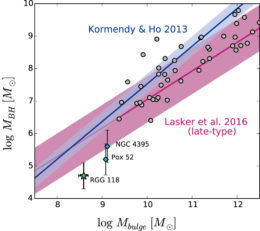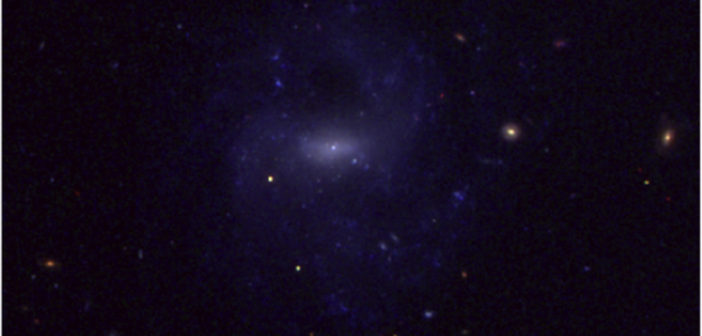
Based on its bulge mass, RGG 118’s black-hole mass is low relative to the scaling relation that holds for more massive galaxies with classical bulges. [Adapted from Baldassare et al. 2017]
In this subtle three-color image by Hubble, the nearby dwarf disk galaxy RGG 118 is revealed (you may need to turn up your screen brightness to see its extent!). This tiny galaxy is
noteworthy for hosting the smallest active supermassive black hole — at just 50,000 solar masses — found in a galactic center. In a new study led by Vivienne Baldassare (formerly at University of Michigan and now a NASA Einstein Postdoctoral Fellow at Yale University), a team of scientists has used Hubble to image RGG 118 in detail to explore its morphology. They determine that the active galaxy contains an outer spiral disk surrounding an inner pseudobulge, and they confirm that RGG 118’s black hole is undermassive relative to the relation between black-hole mass and bulge mass that describes traditional galaxies well. This suggests that black holes in disk-dominated galaxies grow more gradually than those in galaxies with classical bulges. To learn more about the authors’ discoveries, check out the paper below.
Citation
Vivienne F. Baldassare et al 2017 ApJ 850 196. doi:10.3847/1538-4357/aa9067



1 Comment
Pingback: AGN in dwarf galaxy with low mass BH